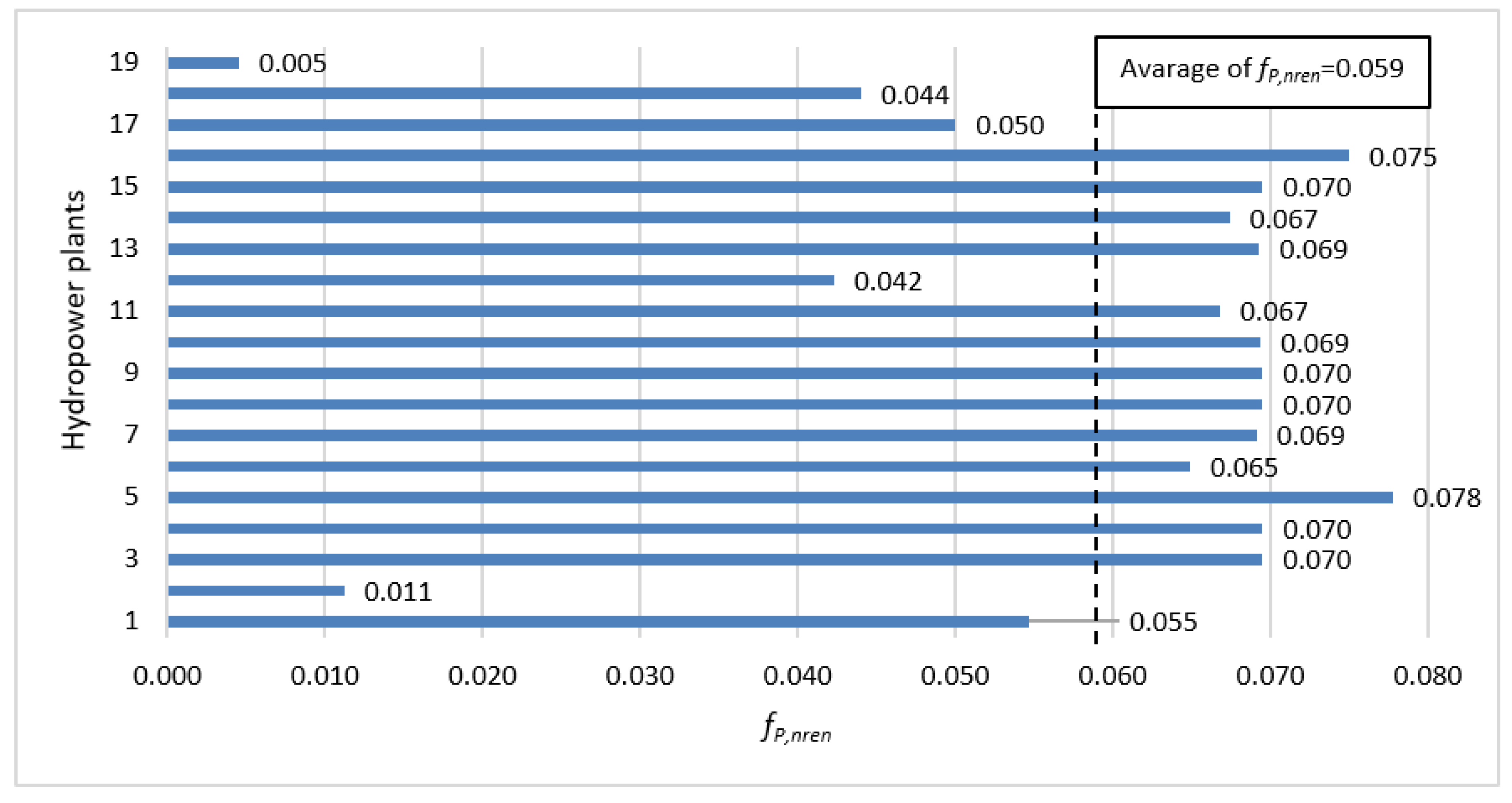Evaluation of the Influence of the Primary Energy Factor of Hydropower Plants in the Methodology for Assessing the Energy Performance of Buildings †
Abstract
:1. Introduction
2. Methods
3. Results and Discussion
4. Conclusions
Author Contributions
Acknowledgments
Conflicts of Interest
References
- European Commission. 2030 Energy Strategy. 2018. Available online: https://ec.europa.eu/energy/en/topics/energy-strategy-and-energy-union/2030-energy-strategy (accessed on 20 June 2018).
- EN 15603:2014; Energy Performance of Buildings—Overarching Standard EPBD. European Union: Brussels, Belgium, 2014.
- ECOFYS. Primary Energy Factors for Electricity in Buildings. Available online: http://download.dalicloud.com/fis/download/66a8abe211271fa0ec3e2b07/ad5fccc2-4811-434a-8c4f-6a2daa41ad2a/Primary_energy_factors_report_ecofys_29.09.2011.pdf (accessed on 1 March 2019).
- Li, H.X.; David, J.; Edwards, D.J.; Hosseini, M.R.; Costin, G.P. A review on renewable energy transition in Australia: An updated depiction. J. Clean. Prod. 2020, 242, 118475. [Google Scholar] [CrossRef]
- Vaca-Jiménez, S.; Gerbens-Leenes, P.W.; Nonhebel, S. Water-electricity nexus in Ecuador: The dynamics of the electricity's blue water footprint. Sci. Total Environ. 2019, 696, 133959. [Google Scholar] [CrossRef] [PubMed]

Publisher’s Note: MDPI stays neutral with regard to jurisdictional claims in published maps and institutional affiliations. |
© 2020 by the authors. Licensee MDPI, Basel, Switzerland. This article is an open access article distributed under the terms and conditions of the Creative Commons Attribution (CC BY) license (https://creativecommons.org/licenses/by/4.0/).
Share and Cite
Tamašauskas, R.; Šadauskienė, J.; Šadauskaitė, M. Evaluation of the Influence of the Primary Energy Factor of Hydropower Plants in the Methodology for Assessing the Energy Performance of Buildings. Proceedings 2020, 51, 4. https://doi.org/10.3390/proceedings2020051004
Tamašauskas R, Šadauskienė J, Šadauskaitė M. Evaluation of the Influence of the Primary Energy Factor of Hydropower Plants in the Methodology for Assessing the Energy Performance of Buildings. Proceedings. 2020; 51(1):4. https://doi.org/10.3390/proceedings2020051004
Chicago/Turabian StyleTamašauskas, Rokas, Jolanta Šadauskienė, and Monika Šadauskaitė. 2020. "Evaluation of the Influence of the Primary Energy Factor of Hydropower Plants in the Methodology for Assessing the Energy Performance of Buildings" Proceedings 51, no. 1: 4. https://doi.org/10.3390/proceedings2020051004
APA StyleTamašauskas, R., Šadauskienė, J., & Šadauskaitė, M. (2020). Evaluation of the Influence of the Primary Energy Factor of Hydropower Plants in the Methodology for Assessing the Energy Performance of Buildings. Proceedings, 51(1), 4. https://doi.org/10.3390/proceedings2020051004



